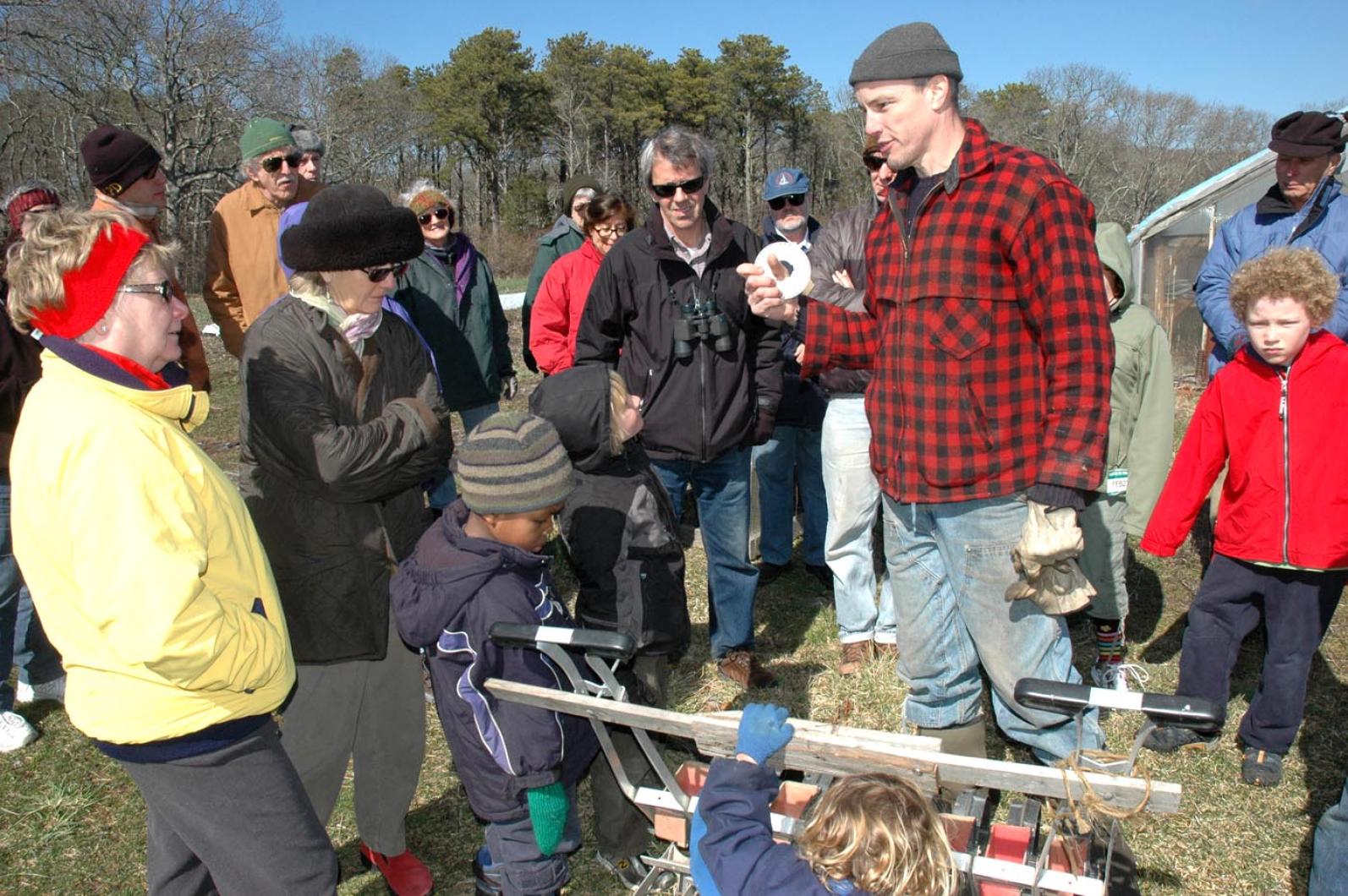Can’t wait for those fresh salad greens? Well, by the first of May, a mere 45 days away, you should be able to drop by Cronig’s and purchase a 10-ounce bag of North Tabor Farm’s salad greens, and the season will be under way.
This past Sunday, more than two dozen stalwart walkers turned out for a tour of North Tabor Farm, run by Matthew Dix and Rebecca Miller, sponsored by the Vineyard Conservation Society. This was the third in a series of winter walks aimed at exploring the agricultural land of the Vineyard, and the crowd expressed an acute interest in each aspect of the farm.
The society’s executive director Brendan O’Neill set the tone for the afternoon with a brief description of how the farm came into being. As part of a subdivision taken over by the town of Chilmark, this lot, North Tabor Farm, was designated an agricultural site. The owners, Mr. Dix and Ms. Miller, who have three children, bid on the property and won the rights to work the land. They have lived on site since 1994, and do, indeed, work the land.
The primary crop of North Tabor Farm is salad greens, and Mr. Dix explained the work involved, from raising the soil into firm beds to the mechanics of seeding, irrigating and protecting their delicate crop. “We mainly grow a lot of salad,” he said, adding that cut flowers, sold at the farmer’s market and for weddings, and fresh vegetables, supplement their main produce.
There is livestock: eight goats, milked for family use, a couple of horses and a gaggle of chickens. Children on the walk enjoyed hobnobbing with the goats and horses while the older generation quizzed Mr. Dix on techniques to protect his crops from deer. (Baited electric fencing attracts the deer, who quickly learn to avoid the fence, he said.)
Besides salad greens, Mr. Dix raises shiitake mushrooms, as many as 120 pounds a year. That’s an impressive haul for a minimum amount of work. He basically “plants” the spores in a cut oak branch, and after a year or so, harvests his crop.
But the primary crop, the salad greens, is seeded three or four times a week, with a three-week incubation period and then harvest. They squeeze a dozen seeds into each inch of soil in the three and a half acres he cultivates and harvests more than three hundred pounds of greens each week. There’s little room for error.
“Pretty intense, in season,” Mr. Dix drawls, “but Rebecca pretty much runs the farm in the summer.” Mr. Dix works full time as conservation lands foreman of the Martha’s Vineyard Land Bank, limiting his hours on the farm.
The crowd of walkers questioned Mr. Dix on his strawberry beds, still in an experimental phase; on the rotation of crops (it’s either salad greens or flowers); and on his portable greenhouse, which he drags across the field to relocate as needed. North Tabor Farm also sports a couple of hundred cultivated blueberry bushes to supplement its fruit offerings.
Mr. Dix and Ms. Miller presented themselves as a low-key, serious couple, dedicated to farming, pure and simple. They do hire a few part-time helpers in season, and their children pitch in, but it basically is their personal involvement which makes the farm work.
Following the walk across the luscious, sloping fields of greens, visible from North Road just south of Great Rock Bight, Mr. Dix led his charges into the woods, along an ancient way, past long-lost clay pits used for the brickworks, and up into Middle Line Preserve, a hilly site owned by the land bank. The overall walk took more than two and a half hours, and neatly combined the intricacies of farming with an intimate explanation of the wooded areas nearby.
At the end, VCS offered cookies and cider to the famished participants, and Mr. Dix reaffirmed that the salad greens would indeed be planted around the first of April, and, if all goes well, they would be harvested and bagged for purchase by the first of May. So the winter is indeed moving along, and the folks at North Tabor Farm are looking out for us.







Comments
Comment policy »